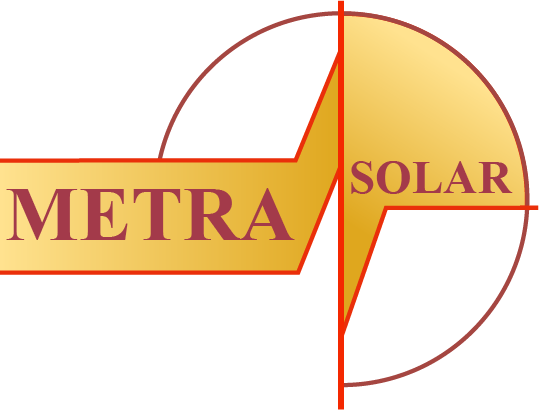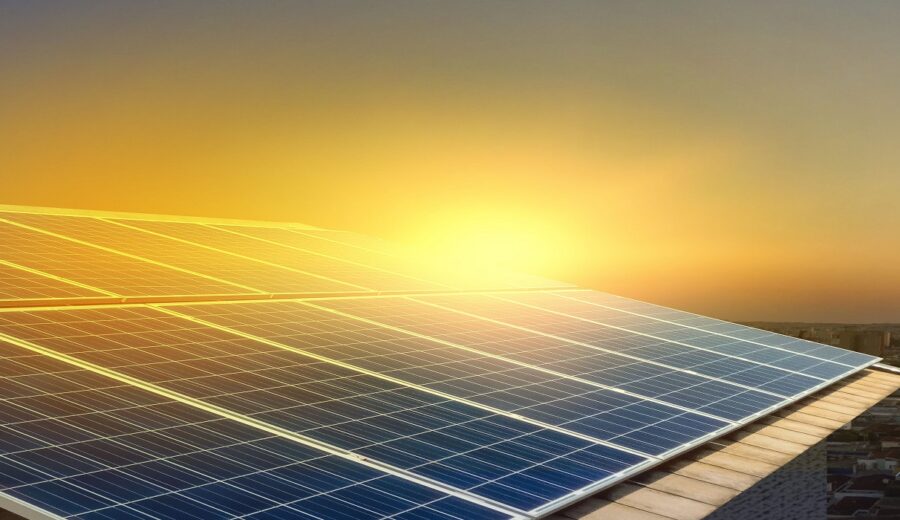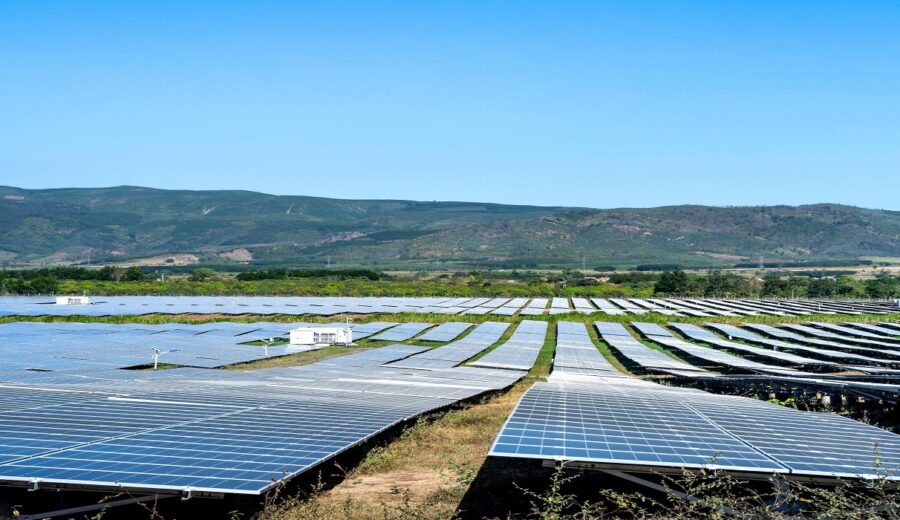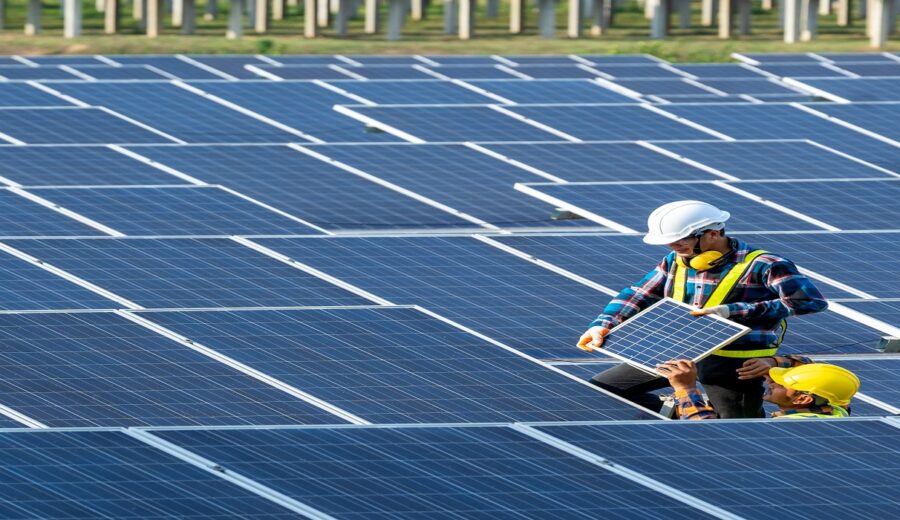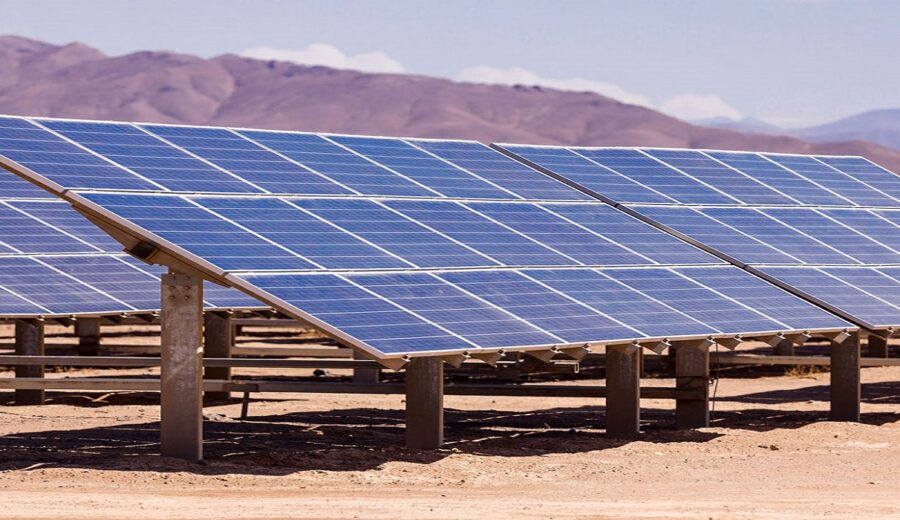Charge Controllers
If you are planning to install a solar project off the grid with a battery connected, you will want to consider a solar charge controller for your system. Charging controllers act as a gateway for your battery, ensuring that you do not add to your energy storage system and do not damage the energy storage system.
What is a solar charge controller?
Solar Charge Controller Adjusts your solar battery to prevent it from overcharging. Batteries are rated for voltage capacity, and more than this voltage can lead to permanent battery damage and loss of performance over time. Solar charge controllers act as a gateway to your battery storage system, ensuring that it is not damaged by overload.
Charging controllers are only necessary in special cases. In most cases, if you want to install a grid-free solar system, check the charge controllers, from rooftop systems to smaller settings on boats or RVs. If you are a homeowner looking to install a solar array with a battery connected to the mains, you no longer need a charge controller – once your battery is full, the extra energy is automatically routed to the mains instead and delivered to you. it helps. Avoid overloading the battery.
Types of solar charge controllers
If you want to use solar to completely disconnect the network, consider two types of charge controllers: Pulse Width Pulse Controllers (PWM) and Maximum Power Point Tracking (MPPT) controllers.
Pulse Width Modulation (PWM) Solar Charge Controllers
PWM solar charge controllers are the standard type of charge control available to solar buyers. They are simpler than MPPT controllers and therefore generally cheaper. PWM controllers reduce the amount of current entering your battery as capacity approaches. When your battery is full, PWM controllers maintain a “trick” mode, meaning that they supply a small amount of power continuously to prevent battery damage.

Solar Charge Controllers Maximum Spot Detection (MPPT)
MPPT solar charge controllers are a more expensive and sophisticated charge control option. They have the same protection as a switch that a PWM controller does, and as your capacity approaches, your home battery power decreases.
Unlike PWM controllers, MPPT charge controllers can pair dissimilar voltages from panels and batteries. MPPT controllers adjust their input to maximize power from your solar array, and can also adjust their output power to match the connected battery. This means that MPPT charge controllers are more efficient than PWM controllers and use the full power of your solar panels to charge a home battery system.
What is a solar charge controller?
If you are planning to install a solar project off the grid with a battery connected, you will want to consider a solar charge controller for your system. Charging controllers act as a gateway for your battery, ensuring that you do not add to your energy storage system and do not damage the energy storage system.
What is a solar charge controller?
Solar Charge Controller Adjusts your solar battery to prevent it from overcharging. Batteries are rated for voltage capacity, and more than this voltage can lead to permanent battery damage and loss of performance over time. Solar charge controllers act as a gateway to your battery storage system, ensuring that it is not damaged by overload.
Charging controllers are only necessary in special cases. In most cases, if you want to install a grid-free solar system, check the charge controllers, from rooftop systems to smaller settings on boats or RVs. If you are a homeowner looking to install a solar array with a battery connected to the mains, you no longer need a charge controller – once your battery is full, the extra energy is automatically routed to the mains instead and delivered to you. it helps. Avoid overloading the battery.
Types of solar charge controllers
If you want to use solar to completely disconnect the network, consider two types of charge controllers: Pulse Width Pulse Controllers (PWM) and Maximum Power Point Tracking (MPPT) controllers.
Pulse Width Modulation (PWM) Solar Charge Controllers
PWM solar charge controllers are the standard type of charge control available to solar buyers. They are simpler than MPPT controllers and therefore generally cheaper. PWM controllers reduce the amount of current entering your battery as capacity approaches. When your battery is full, PWM controllers maintain a “trick” mode, meaning that they supply a small amount of power continuously to prevent battery damage.
Solar Charge Controllers Maximum Spot Detection (MPPT)
MPPT solar charge controllers are a more expensive and sophisticated charge control option. They have the same protection as a switch that a PWM controller does, and as your capacity approaches, your home battery power decreases.
Unlike PWM controllers, MPPT charge controllers can pair dissimilar voltages from panels and batteries. MPPT controllers adjust their input to maximize power from your solar array, and can also adjust their output power to match the connected battery. This means that MPPT charge controllers are more efficient than PWM controllers and use the full power of your solar panels to charge a home battery system.
Solar Technologies
The main element of photovoltaic technology is the solar cell, which converts sunlight directly into electricity. Solar cells are made of solid semiconductor materials.
Photovoltaic cells, made of a P-N junction, directly convert sunlight into electricity without any pollution. The principles of photovoltaic production from photovoltaic cells are shown in the figure below.

In fact, when sunlight hits the cell surface, the photons are absorbed by the semiconductor atoms, the free electrons of the negative layer. These free electrons find their way to the positive layer through the external circuit, and as a result, an electric current flows from the positive to the negative layer.
Existing and developing commercial photovoltaic technologies can be classified into three groups: crystal technology, thin film technology and emerging photovoltaic technology, which differ in terms of light absorption efficiency, energy conversion efficiency, manufacturing technology and production costs.
Crystal technology
The main material used to make solar cells is silica or silicon. Silica is a substance that makes up the bulk of the Earth’s crust, but it is mainly found in the form of a compound of silicon oxide or silica (SiO2), which in scientific terms is called sand. Silicon cells are highly expensive due to the silicon fabrication and purification process.

Crystal technology is used in three forms: single crystal silicon, polycrystalline silicon and gallium arsenic.
Thin film technology
In a thin film cell, layers of semiconductor materials with a thickness of 2-0.3 mm are placed on glass, plastic, stainless steel and other substrates.
Because thin film materials have a higher absorption coefficient than crystalline materials, the sediment layer of photovoltaic materials is considered to be very thin, which reduces cell cost. However, thin-film photovoltaic cells have low conversion efficiencies.
Types of thin film technologies include: amorphous silicon, cadmium telluride, CIGS
Emerging and new technology
Technologies of this generation are in the pre-commercialization stage. Emerging and new technologies are divided into the following categories:
- Concentrating PV (CPV) photovoltaic cells
- Organic PV solar cells
- Color-sensitive solar cells
- Polymer solar cells
- Liquid crystal based solar cells
- Advanced thin films
Battery Materials
Battery Materials
Batteries store electrical energy chemically. In photovoltaic systems, solar batteries are responsible for support at night and on cloudy days. Because the output power of photovoltaic panels varies during the day, a storage battery can be a relatively constant source of power generation until changes. Compensate for the light reflected on the plates.
Analyzing the types of solar batteries in terms of structure
Batteries used in the home are usually made with one of three chemical compounds: lead acid, lithium, and brine.
In most cases, lithium batteries are the best option for a solar system, although other batteries can be more effective.
- Lead acid
Lead acid batteries are a proven technology that has been used in off-grid systems for decades. While they have a relatively short lifespan and lower DOD than other types of batteries, they are one of the cheapest options currently in market, they are in the field of home energy storage. For homeowners who want to have an off-grid system and need to install a large number of energy storage, lead acid can be a good option.
Lead acid batteries can be divided into two categories:
1- Floaded lead acid battery
2- Valve Regulated Lead Acid Battery (VRLA) or (Sealed Lead Acid Battery (SLA)
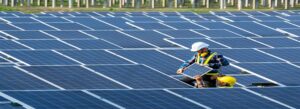
Dry batteries are also divided into two categories:
1- AGM Battery
2- GEL Battery
- Lithium
The energy storage technology of most of modern homes uses several chemical compounds of lithium ion. Lithium batteries are lighter and more compact than lead acid batteries. They also have a higher DOD and longer life compared to lead. They are acids. However, lithium batteries are more expensive than similar acid leads.
- Salt water
A newcomer to the home energy storage industry are saltwater batteries. Unlike other home energy stores, saltwater does not contain heavy metals, but is dependent on salt water electrolytes. While batteries that use heavy metals, including lead acid and lithium, need to be prepared with a special process, a saltwater battery can be easily recycled. However, as a new technology, saltwater batteries are relatively tested. Are not.
Analyzing the types of batteries in terms of application
Large battery companies provide different types of batteries to the consumer according to its use. These batteries are almost identical in terms of materials and differ only in structure and production.
The following are some common uses for lead acid batteries:
- General purpose
- Deep cycle
- Solar power
- Long life standby
- High rate / UPS
- Electric motor
How to wire batteries
How batteries are wired in solar systems varies according to the system voltage as well as the battery voltage. For example, if the system voltage is 24 volts and we use 12-volt batteries, we must combine two 12-volt batteries so that we can consider the system voltage as 24 volts.
Solar Panels Installation
There are several reasons for choosing a solar panel and setting up solar systems. Some want to turn to clean and renewable energy. Some people have the idea of reducing their reliance on the electricity grid, and some people choose solar systems because they do not have access to the utility network.
Before learning how to install a home solar panel, you need to choose the right type of solar power system for your purpose. All types of systems have common features: they all include solar panels, inverters, bases, and wiring. However, there are fundamental differences that can affect the cost and complexity of the project. The followings are some of them.
- Network solar panel system:
- Hybrid solar panel system:
- Off-grid solar system:
Steps to install a home solar panel
Step 1: Mark the installation location of the solar panel
At the beginning of the home solar panel installation tutorial, you should find and mark the right place to install the solar panel bases. It is better to install the strongest part of the roof to easily support the weight of the solar panels. Do not forget that one of the best places to choose for installation is the passage of metal roof beams. Because these beams can easily bear heavy weights.
Step 2. Install the ceiling fittings
Start the installation when you have determined the right place for the connections or the location of the roof beams and connect the installation rails in the place you have already specified. This process will be different depending on the type of roof you have.
Step 3. Install the rails
As the third step in learning how to install a home solar panel, you need to install the rails carefully. Prepare to connect the rails by placing the corners in place. Measure and cut your rails on the ground so that there are no metal chips on the roof.

Step 4. Place the solar panels on the roof
Remember: safety first, then work! Consider safety procedures as you prepare to move your panels to the ceiling. Make sure you use the right protective equipment. You can wrap your solar panels in a blanket to protect hard surfaces when moving them.
Step 5. Do the electrical wiring
In the sixth step of the home solar panel installation tutorial, you are dealing with electricity and wiring. Connectors such as MC4 are used when wiring; Because these connectors can be connected to a variety of solar panels. These connections are made in 2 ways, which are:
- Series connection
- Parallel connection
Step 6. Connect the system to the solar inverter
The next step is to connect the system to a solar inverter. The positive wire of the solar panel is connected to the positive terminal of the inverter and the negative wire is connected to the negative terminal of the inverter. The solar inverter is then connected to the solar battery and the mains input to generate electricity.
Step 7. Connect the solar inverter and the solar battery
In this step of the home solar panel installation tutorial, you must connect the solar inverter to the solar battery. The positive terminal of the battery is connected to the positive terminal of the inverter and the negative terminal of the battery is connected to the negative terminal of the inverter. Batteries in off-grid solar systems are required to store backup power.
Step 8. Connect the solar inverter to the mains
The next step is to connect the inverter to the mains. To make this connection, a normal plug is used to connect to the main power switch board. An output wire is connected to an electrical board that supplies power to the house.
Step 9. Start the solar inverter
Now that all the wiring and wiring is done, it is time to start the inverter switch on the main switch of the house. Remember to turn off the fuse box before doing anything at this stage. Most solar inverters have a digital display to show you the production and usage statistics of the solar unit.
Solar Equipment
The main equipment of a solar panel system
Below are the basic and general equipment and devices needed to install a solar panel system at home. Details of each device are given below that section.
1) Solar panel
The solar panel, also called the solar cell or photovoltaic cell, is the backbone of the solar system. There are different types of solar panels including polycrystalline (polycrystalline [1]) and monocrystalline (monocrystalline).
Monocrystalline solar panels are more efficient and slightly more expensive than polycrystalline solar panels. The criteria for choosing a solar panel are different; Such as space required, warranty, efficiency, type of technology, cost, etc. Keep in mind that when choosing the right solar panel to run your residential solar power, its output is crucial.
2) Charging controller
As its name suggests, a charge controller (also known as a charge regulator) is a device used to regulate the voltage and current of solar panels connected to batteries. The main purpose of a charge controller is to prevent overcharging of the batteries (which may damage the batteries) through the solar panels, because 12-volt solar panels, in the absence of load or in direct sunlight, They supply 17-20 volts. The reason is that the manufacturer designs the solar panel for different climates and environments, so that it provides the highest voltage rate even in the case of cloud cover, weak sun, thick fog, etc.

3) Battery
Batteries are used to store backup charging current. There are several types of batteries used in solar systems, and their purpose is to store and backup operations during the night, it means when power is not supplied directly from the solar panels. Series, parallel or series-parallel connection of the battery bank depends on the system design which means the system configuration is 12 volts, 24 volts or 48 volts. In cloudy weather and in the absence of sunlight, the battery bank can be charged via the AC power supply from the mains and through the inverter for later use.
4) Inverter / UPS
An inverter is a device that converts a DC power supply to an AC power supply. An inverter and converter, known as a UPS (uninterruptible power supply), is used to convert DC voltage to AC because home appliances work with AC. The UPS is also used to convert AC to DC to charge the battery from a direct AC power supply.
Grid Maintenance
Everything about grid maintenance solar panel system
Like car and home and utility maintenance, your network needs more scrutiny and care to avoid problems. There are some things you can do to help prevent network damage.
What is grid maintenance?
grid maintenance includes: All tasks as well as existing systems for monitoring, updating and running the computer network before problems occur.
The grid itself consists of a set of physical solutions such as hardware and servers, and non-physical solutions such as software and cloud computing. Also known as your IT ecosystem.
What are some examples of necessary actions?
Troubleshoot grid problems
If warning signs or minor problems are ignored for a long time, you may encounter problems that are complex and costly to repair. The task you can do as a grid maintenance provider is to use your experience and knowledge to troubleshoot any problems in your grid or network.
Install and configure services
Whenever you get new equipment or software to upgrade, you probably need some sort of installation and configuration. Thus, when unavoidable changes occur in the organization or a new user is added, it may be necessary to reset the network settings. If not followed up properly, valuable time can be taken from your employees.
Monitor and improve network performance
Poor network performance can be the silent killer of your company’s potential. If your network performance is not consistent with other companies, it will be much harder to sync other issues with competitors.
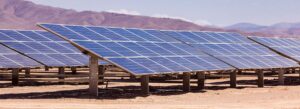
EP or following the principles
An important part of maintaining your grid is making sure all your tools comply with the company’s policies and regulations. Adherence to principles should always be a top priority. In this way, not only can you avoid endangering yourself and your business, but you can also protect your customers.
Create grid security
Unfortunately, any system can be prone to network failure. Especially when the necessary precautions are not taken. Due to the large amount of data on the server, you should not neglect network security. Network maintenance service can help protect firewalls, VPNs and intrusion tactics. Your network security is one of the most important elements in maintaining your grid. And maintaining it regularly will help your company stay safe from potential threats.
Which hardware devices are most serviced through network maintenance?
Server
Having a reliable server is an integral part of a secure, strong and profitable business. In fact, a good server allows you to manage network resources. Although any computer can act on your server.
Switch
A switch receives input data and directs it to the destination on the local network. In essence, the switch creates an electronic tunnel between the source and the destination. Which no other traffic can enter. For this reason, it is possible to communicate without interference. However, if there is a problem with the switches, your connection may be disrupted. Your network needs to be able to share information. And proper grid maintenance can help you. To ensure that such connections are strong.
Router
Just as a switch creates a tunnel. A router connects the grids. Routers are similar to switches, but they can send packets between different grid. And is not limited to node-to-node communications on the same grid. With routers, like any of these devices, the software they run and the operating system themselves are both prone to damage without regular maintenance.
In addition to all that we have covered in Grid Maintenance, checking and ensuring firewalls is also very important. Our advice to you is to leave it in the hands of experts due to the specialization of repairing grid equipment or maintenance of the grid itself. Also, always take action to prevent any disruption or inconsistency before it occurs.
